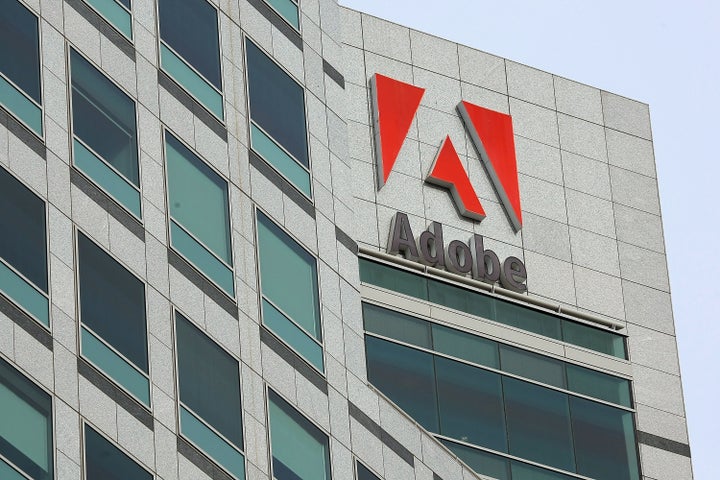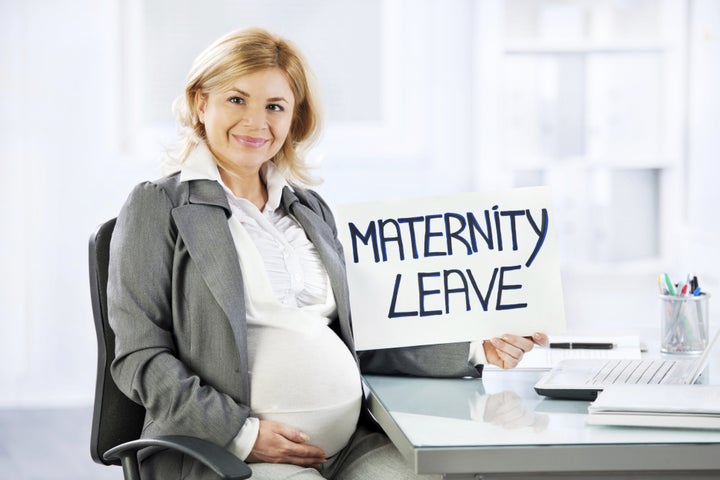
NEW YORK -- Want to get more women to stay at your tech company? Give them more maternity leave. Software maker Adobe is one of a growing group of businesses that extended leave for parents this year, and the payoffs appear to have come quickly.
Far fewer women quit their jobs at Adobe in October, just two months after the software maker announced it would offer a half-year of leave to mothers who give birth, Donna Morris, Adobe’s senior vice president for people, told The Huffington Post on Wednesday. The new policy, which also includes 16 weeks of leave for adoptive parents, surrogates and fathers, doesn’t even go into effect until Nov. 1.
“One month does not make a trend, but I’ve got to tell you I was really excited about that,” Morris said in an interview at HuffPost’s offices. “I’m feeling like we may be sparking a baby boom,” she said with a grin.
Adobe's news comes at a time when tech companies are under fire for not having enough women and under intense pressure to hang on to their employees in a super-competitive job market.
Women are far more likely than men to quit their jobs in tech. As you move up the ranks at a tech company, you'll see fewer and fewer of them.
Many of Adobe's peers are betting on maternity leave to both win this so-called "war for talent" and boost their terrible gender numbers. Those upping the ante on leave in the past year include Microsoft, Intel and Ciena. Netflix made a splash this summer when it announced up to 12 months paid leave.
“The battle now is stemming the tide of people leaving. There’s so much competition,” said Morris. “I hope our female attrition will go flat, if not start to decline.”
Overall, Adobe’s 14,000-employee workforce is just 28 percent female; though in San Jose headquarters its numbers are better. Forty-two percent of employees there are women.

Typically, men and women leave Adobe at the same rate -- close to 10 percent of the company's U.S. employees quit their jobs each month, Morris said. The rate has crept up in recent years, as more tech companies battle to hire good people, she said. But in October, women’s attrition rate fell by half to 5 percent, while men’s stayed constant.
Adobe currently employs 6,000 workers in the U.S.
Adobe has been recruiting more women at the entry level -- 38 percent of hires recruited straight out of university are women. Still, like the rest of the tech industry, Adobe doesn't have enough women throughout the company.
The problem in tech is that women leave before they can move up the ranks. In a 2014 survey of women in the science, tech and engineering fields, women were 45 percent more likely than men to say they planned on leaving their job within the coming year.
While there’s a lot of talk in tech about making the culture “more friendly” to females -- upping the amount of maternity leave on offer sends a far stronger message about your workplace values than any kind of squishy programs companies like to trot out to appeal to females.
Google had success in retaining women after it went from 12 weeks paid maternity leave to five months, Laszlo Bock, the company’s head of people operations, told HuffPost earlier this year. Bock said that before Google expanded leave, women were leaving the company at twice the rate of men when they returned from maternity leave. After the search giant changed its policy, women’s quit rate fell to the same as men’s.
Extending leave “more than pays for itself in not having to go recruit someone brand new,” Bock said.
Morris said something similar about the payoff in offering more leave, emphasizing that earning employee loyalty is "the make-or-break factor in the Silicon Valley talent war." By offering longer leave the company is demonstrating that it cares about its workers and their families, she said. "We’re confident the investment we’re making to cover expanded family leave will pay big dividends.”
